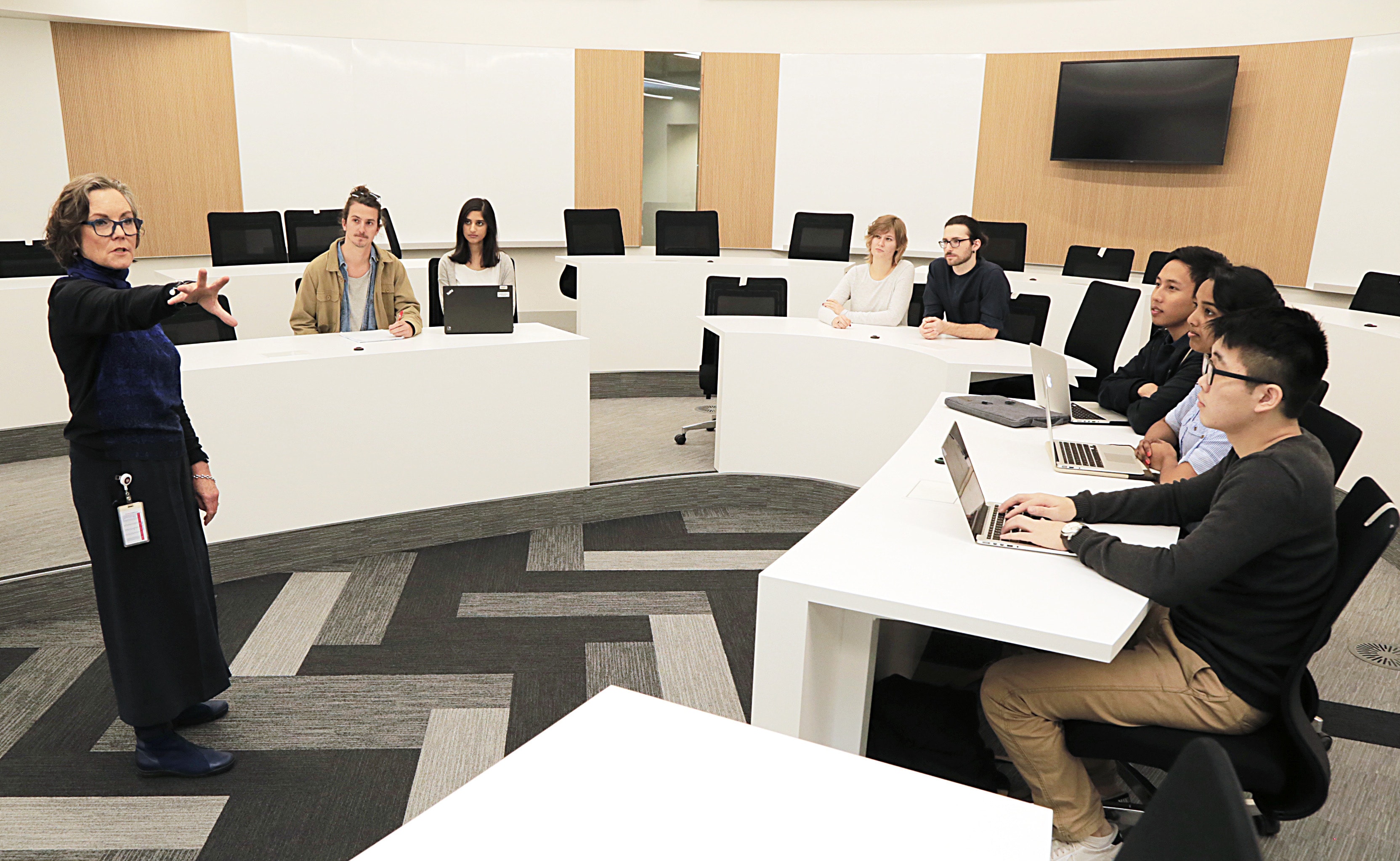Our research
<p>Expertise in medical sciences </p>
,
Expertise in medical sciences
Our researchers from the School of Medical Sciences aim to improve overall human health across seven multidisciplinary themes that reflect the strength, diversity, and depth of our research.
These themes signify keys areas of importance to the Australian community, our international communities, and reflect our partnership with stakeholders such as research institutes, Local Health District partners, granting bodies, government organisations, and philanthropists.
Sydney academics elected as fellows to the Australian Academy
Professor Vanessa Hayes has been elected as fellow of the Australian Academy of Health and Medical Sciences (AAHMS) in recognition of her significant contributions to advancing health and medical research.
Over 160,000 new virus species discovered by AI
161,979 new species of RNA virus have been discovered using a machine learning tool that researchers believe will vastly improve the mapping of life on Earth and could aid in the identification of many millions more viruses yet to be characterised. This research involves Professor Edwards Holmes.
Sydney student discovers critical flaw in global cancer research
Danielle Oste's passion for animal science and student research project turns into the discovery of phantom cell lines under the guidance of Professor Jennifer Byrne, questioning the legitmacy of hundreds of academic cancer research papers.

We're pursuing a future in which health data and information are seamlessly integrated into biomedical discovery and the continuous improvement of health and healthcare delivery.
Our research focuses on developing, applying, implementing, and evaluating informatics tools used to support human health.
It spans applications in omics and precision medicine, applied machine learning and other computational methods applied to data from patients and people in the community, to the implementation and evaluation of digital health technologies.
We have research groups working in cyberpsychology and virtual reality, human factors research, implementation science, bioinformatics, wearables and sensors, clinical pharmacology, and applied machine learning and data science.
Cancer cells exhibit specific hallmarks that distinguish them from normal cells, including an unrestrained capacity to divide, survive and spread throughout the body.
Our aim is to identify and describe the mechanisms that drive the development, progression and dissemination of human tumours and to exploit this information to develop new biomarkers and therapeutic strategies.
Chronic diseases are common, long-lasting conditions with major social and economic consequences. Over 50% of hospitalisations in Australia are due to chronic diseases and the burden on the healthcare system is significant.
The ten major chronic diseases listed by the Australian Institute of Health and Welfare include arthritis, asthma, back pain, cancer, cardiovascular disease, chronic obstructive pulmonary disease, diabetes, chronic kidney disease, mental health conditions and osteoporosis.
Improved insights into the causes and mechanisms underlying these diseases, as well as the pathological processes that progress and sustain them, are critical for the design of better preventive and therapeutic strategies including, drug treatments and implants.
We're developing a research pipeline to progress new solutions from discovery, through pre-clinical validation towards better translational outcomes.
We focus on the systemic study of teaching and learning, using established or validated criteria of scholarship to better understand how teaching (beliefs, behaviours, attitudes, and values) can maximise learning outcomes.
Our research also seeks to develop a more accurate understanding of learning processes, resulting in products that are publicly shared for critique and use by peers, with the goal to have a demonstrable impact on the educational endeavour.
Our research focuses on the interplay between the host immune system and a wide range of medically important human diseases.
By understanding the mechanisms that enable the development of both infectious and non-infectious diseases, as we all as the inflammatory conditions that develop, we can provide a rational basis for the development of novel treatments, immunotherapies, vaccines and other preventative measures to lessen the impact of such diseases on the human population.
Our research expertise lies in the study of a range of pathogen driven and other diseases, including cancer and autoimmune diseases, and the host immunological responses to these conditions.
Our research focuses on understanding the structure, properties, and function of biomolecules, including proteins, peptides, DNA, RNA, lipids, carbohydrates, and metabolites, within the cellular environment. We use a wide variety of technology platforms for the analysis including mass spectrometry-based proteomics/lipidomics/metabolomics, crystallography, NMR, and cryo-EM.
A deep understanding of this molecular and cellular orchestra allows us to better understand mechanisms of disease when one or more components of a pathway is dysregulated.
We dissect molecules and cells put them back together in new ways as a powerful platform for innovating and designing new technologies, including diagnostics, cellular factories, therapeutics, chemical probes, chemical tools, and imaging agents.
Our molecular and cellular discovery-based research uncovers new disease paradigms, disease targets, and treatment approaches.
We aim to understand the structure and function of the nervous system and the underlying pathophysiology of neurological disorders.
Applying cellular and molecular biology, genomics, neural imaging and integrated anatomical, physiological and pharmacological approaches in both humans and animal models, we aim to understand the fundamental properties of neurons, glia, neural circuits and integrated systems.
We aim to apply both basic and clinical neuroscience research to translate or develop into novel therapies and clinical applications for nervous system disorders and to impact and improve health and well-being more broadly.
The key translational target areas are neurocognitive, neurodevelopmental and neuropsychiatric disorders; movement disorders; neuroinflammatory conditions; headache, pain and spinal cord injury.
